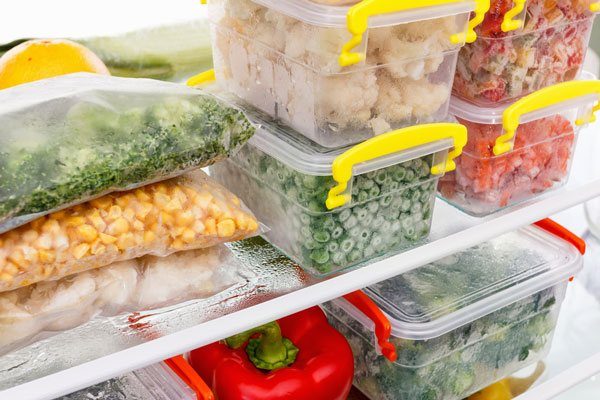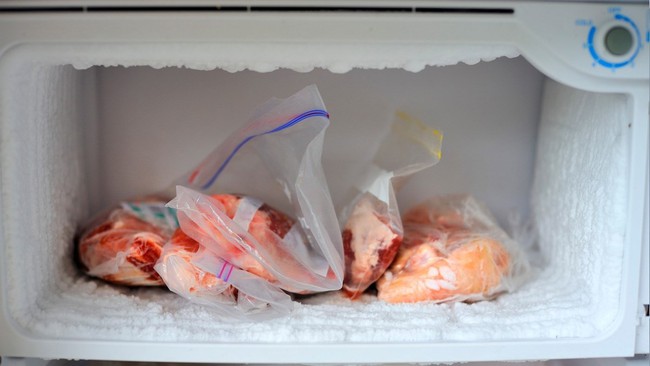Sài Gòn and Hanoi, two major cities in Vietnam, are currently implementing lockdown measures to combat the COVID-19 pandemic. As a result, many people, especially women, are shifting their habits and avoiding daily trips to the supermarket. Instead, they are opting for safer and more efficient alternatives such as preparing food for multiple days or ordering home delivery services.
In this article, we will provide you with valuable tips on preserving fresh vegetables and meat without compromising their quality and nutritional value during these challenging times.

Illustrative photo of preserving vegetables in the refrigerator
How to properly preserve vegetables
1. Classify vegetables, tubers, and fruits
When storing vegetables, it is essential to separate them and avoid mixing different types. If one vegetable starts to deteriorate, others may also spoil or lose nutrients. Additionally, certain fruits like apricots, mangoes, pears, tomatoes, and bananas emit ethylene, a ripening agent that can accelerate the decay process of nearby fruits and vegetables. To ensure optimal freshness and nutrition, store vegetables in separate containers and compartments within the refrigerator.
2. Use food paper to maintain freshness
Green vegetables, in particular, can be challenging to keep fresh for extended periods. Even if stored in containers in the fridge, they may still wilt, become mushy, or develop slime. However, by lining the walls and bottom of the storage container with food paper, you can significantly prolong their freshness.

Using food paper to maintain vegetable freshness
Prior to storing vegetables in the fridge, make sure to wash them thoroughly to remove any dirt. Afterward, wrap them in food paper and place them in sealed bags or containers before storing them in a cool compartment. By following these steps, you can keep your vegetables fresh for 3-5 days.
Proper storage of meat and fish
1. Clean and portion the meat
Before storing meat or fish in the freezer, it is advisable to wash them thoroughly and divide them into portioned sizes suitable for each meal. This practice prevents the need to defrost more than necessary and ensures that the remaining portions maintain their quality and taste when refrozen.

Dividing meat or fish into portioned sizes before freezing
2. Proper thawing techniques
Thawing in the refrigerator: Thawing meat slowly in the refrigerator is the safest and most effective method. Larger food items may require 1-2 days to thaw properly, while smaller pieces can be thawed overnight. It is important to place the meat in the bottom compartment of the refrigerator to prevent any potential dripping onto other foods and avoid the risk of foodborne illnesses.
Thawing using a microwave: If a microwave is available, it is the quickest and most convenient thawing option, especially for smaller meat pieces. Adjust the microwave’s defrost function according to the food’s type and weight. Alternatively, set the microwave to the lowest power level and gradually increase the time until the meat is fully thawed.

Using a microwave to thaw meat (Illustrative photo)
Absolutely avoid: Thawing meat or fish using hot water, or boiling them when they are not fully thawed, as this can compromise the quality of the meat.
By applying these recommended methods, you will be able to preserve the freshness and taste of your vegetables and meat. It is advisable not to hoard excessive amounts of food, as supermarkets still provide delivery services and remain open during this period of social distancing. Ideally, purchase only enough food for a few days to ensure optimal freshness. Freezing vegetables and meat for more than 5 days might result in a decline in their quality.
Wishing you success in preserving your vegetables and meat, while always enjoying fresh and delicious meals!
Ten Strategies to Streamline Your Cooking Process
Are you a busy housewife looking for ways to save time in the kitchen? Did you know that flossing can also help you out? Check out these 10 tips to help you quickly and easily prepare delicious meals for your family. Learn how to peel garlic in 10 seconds and cut cherry tomatoes quickly for a healthy and tasty meal.






































